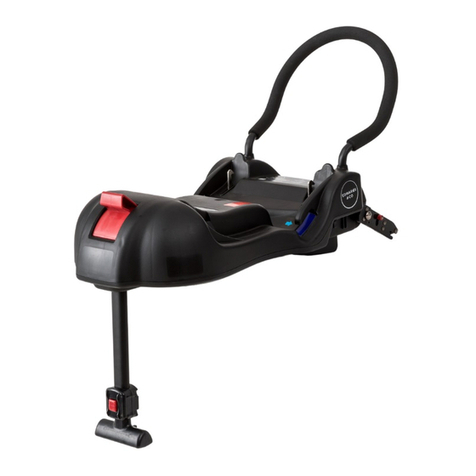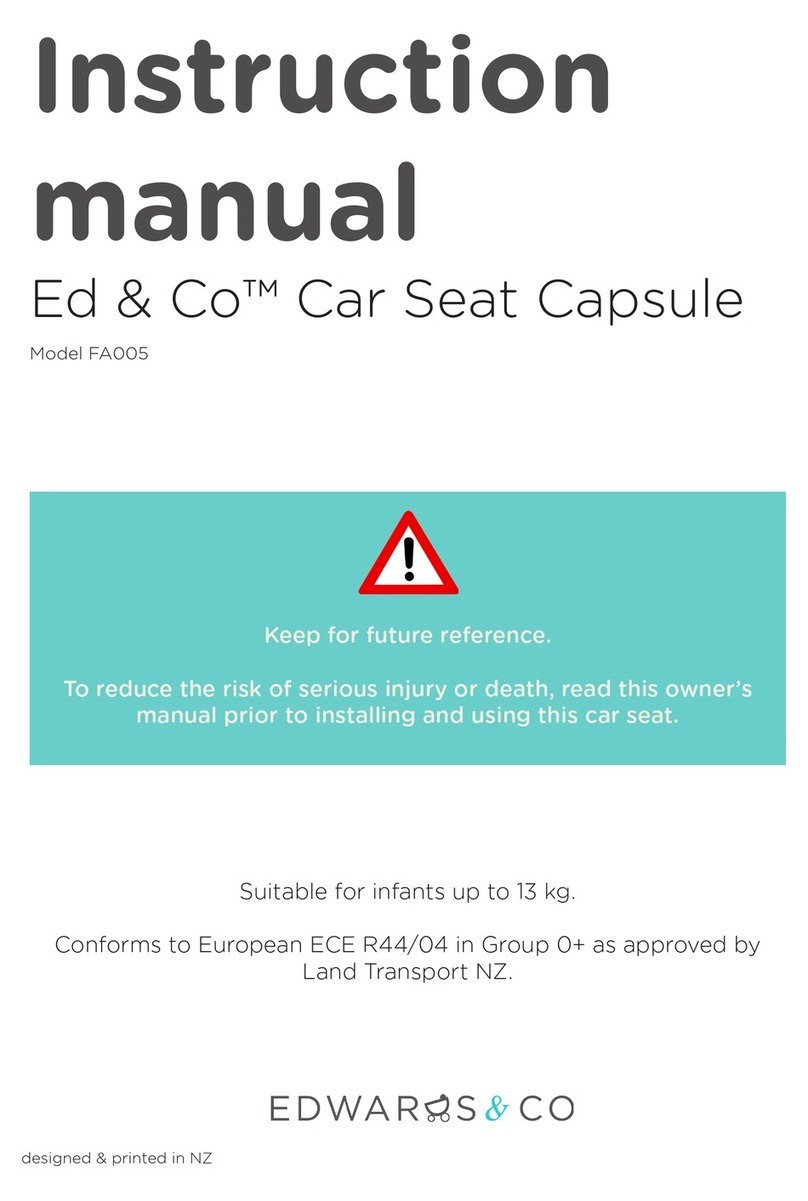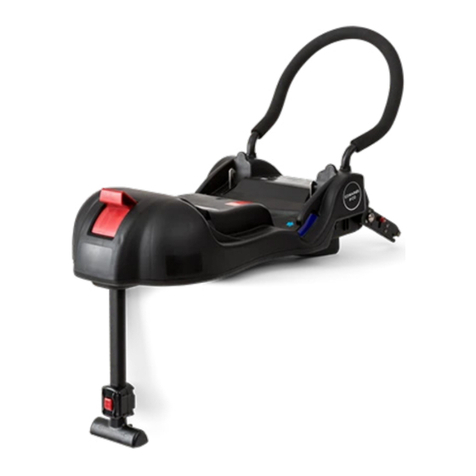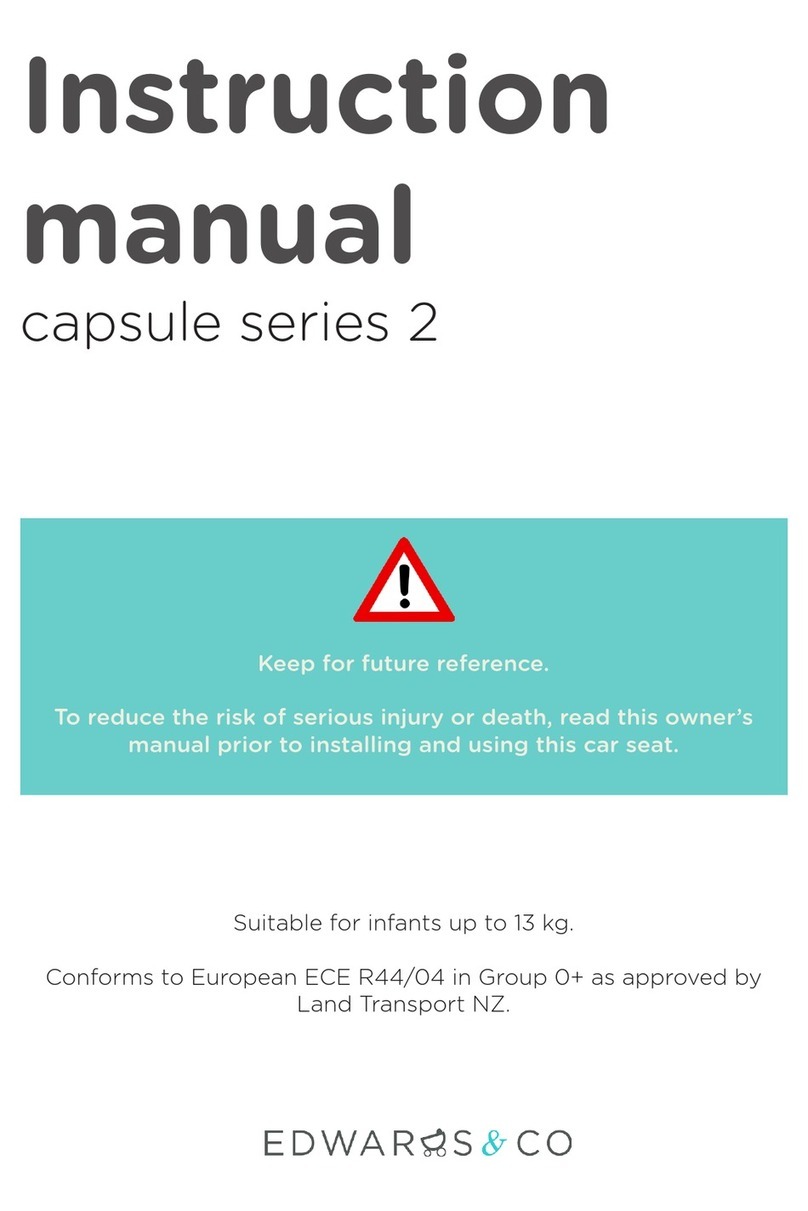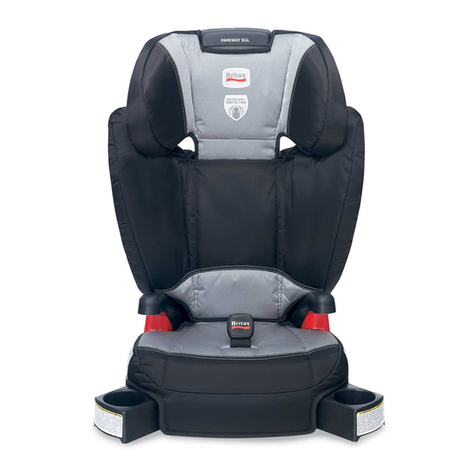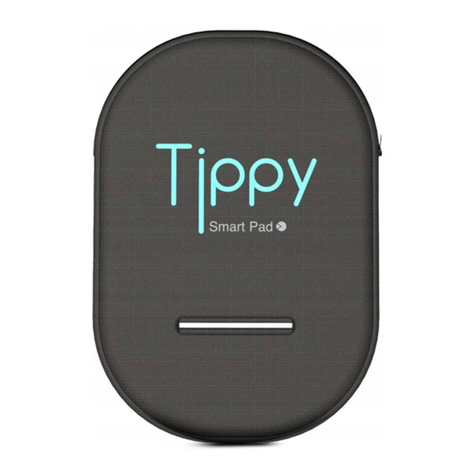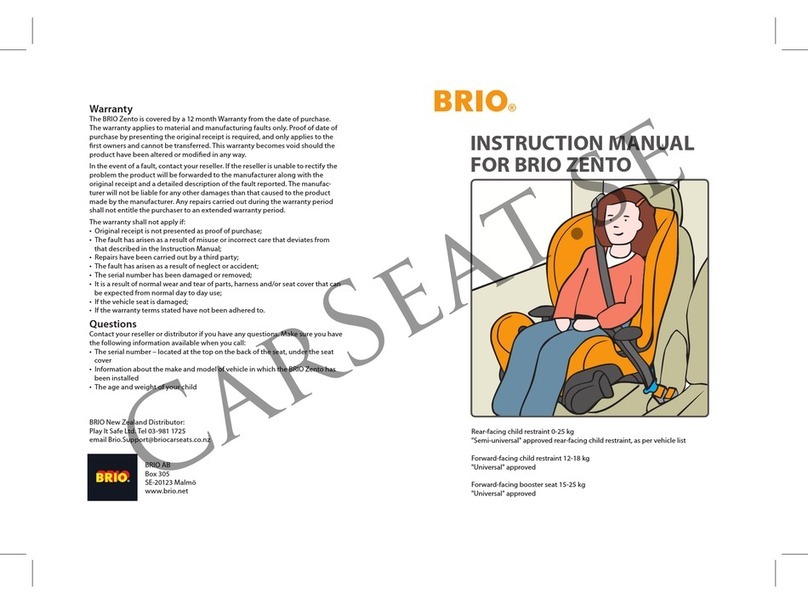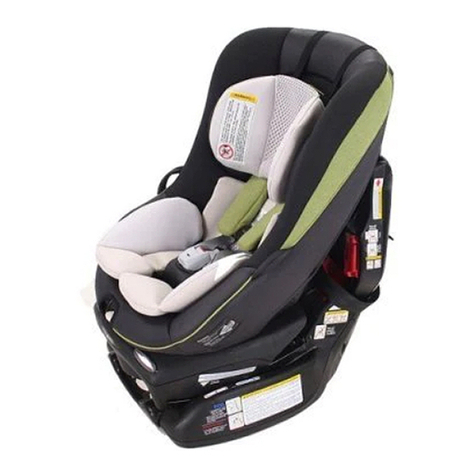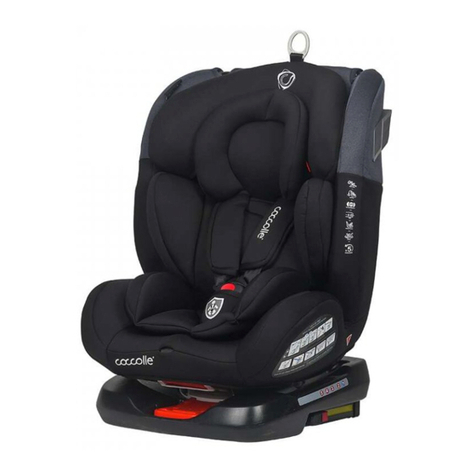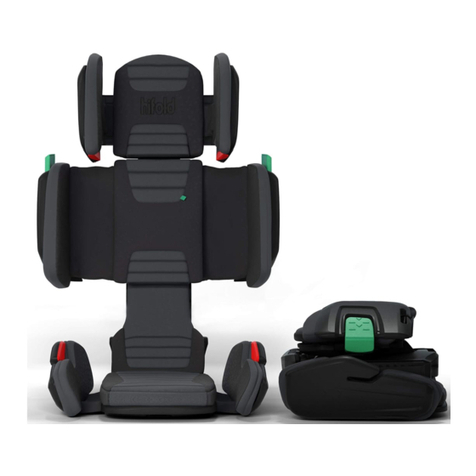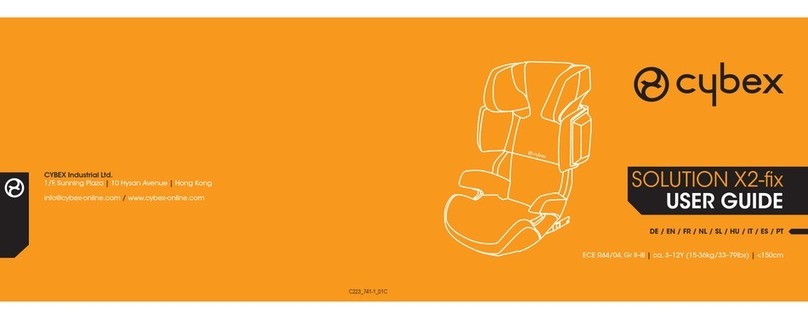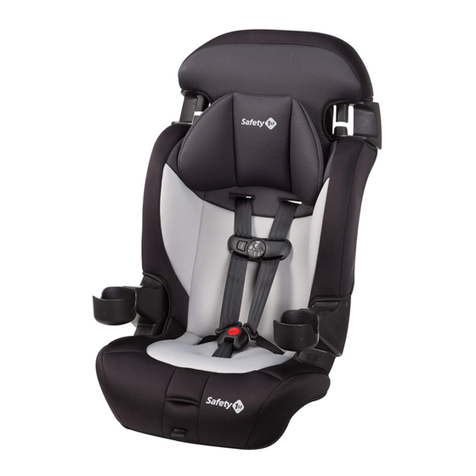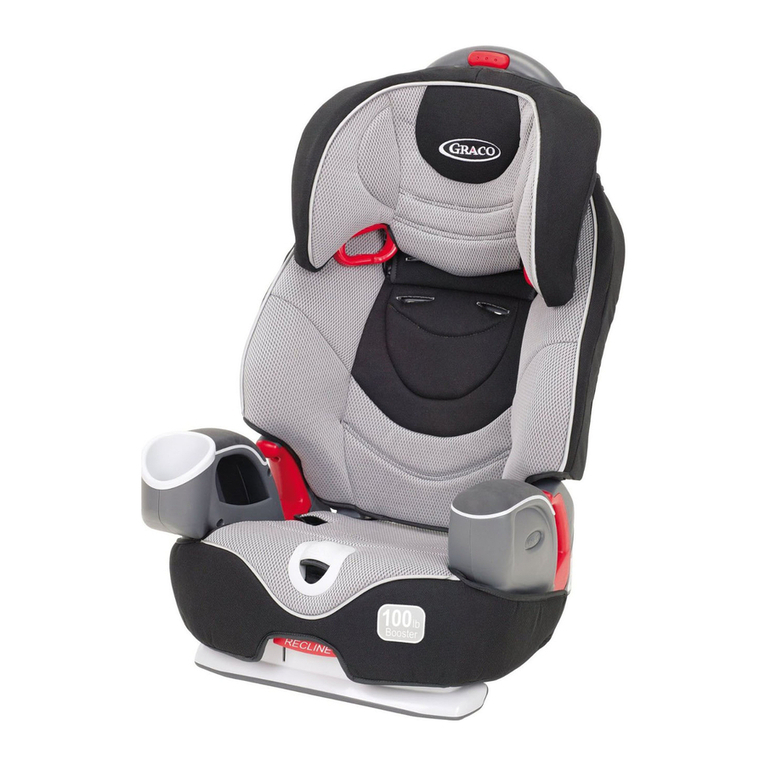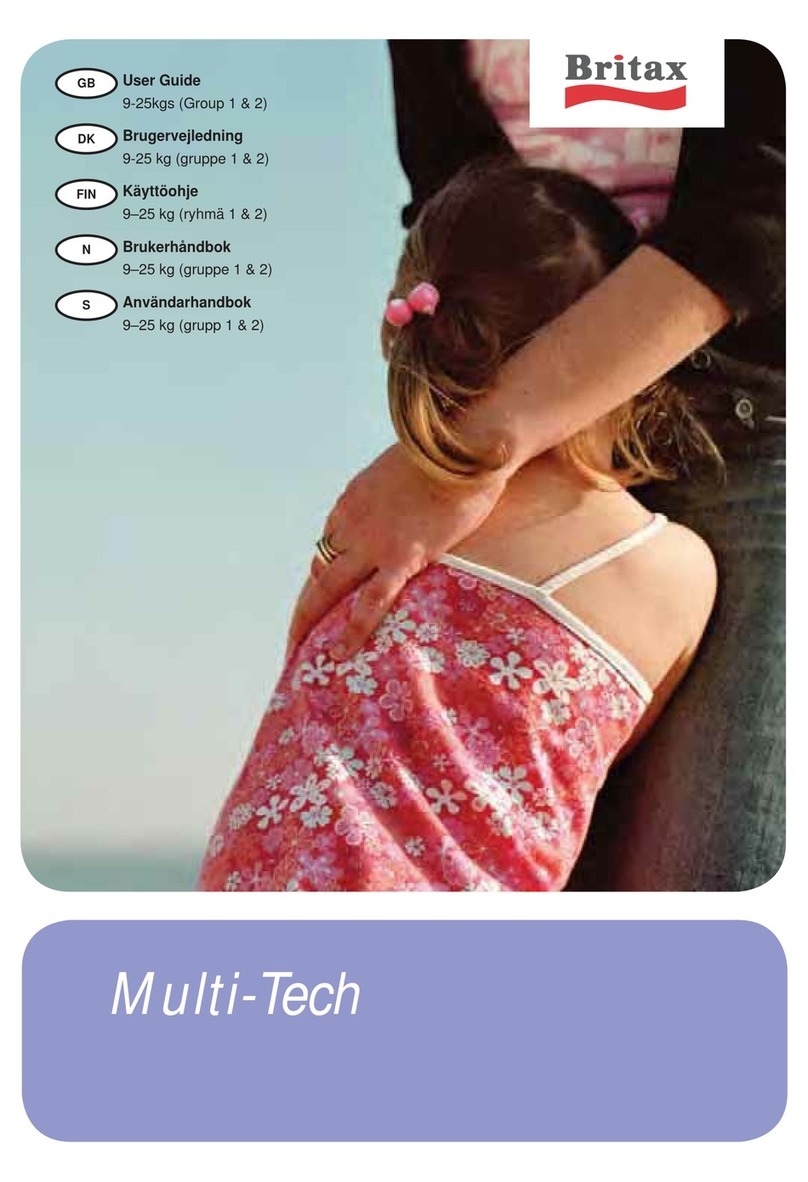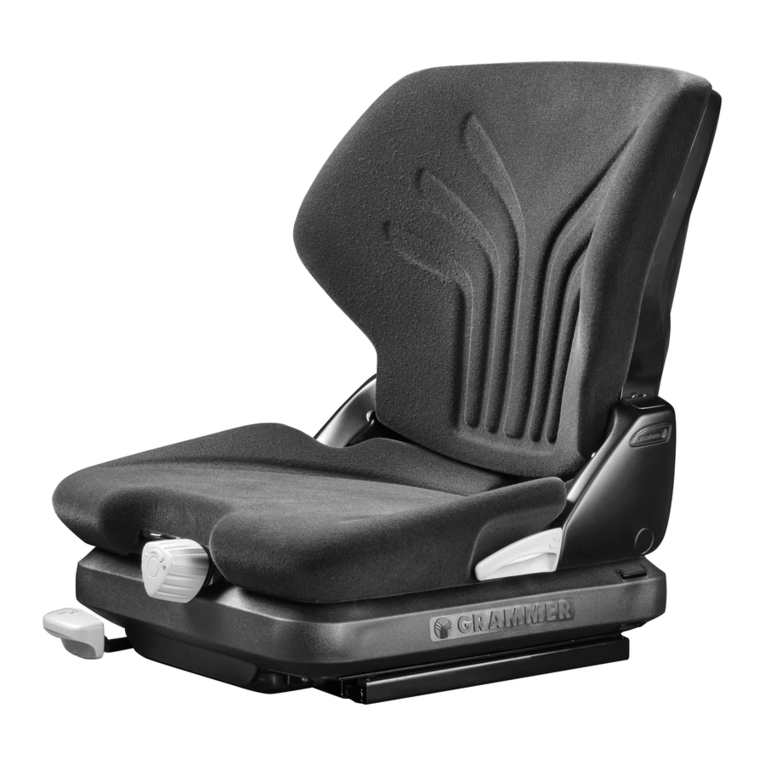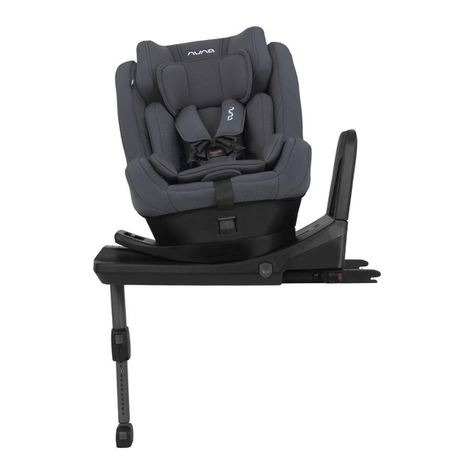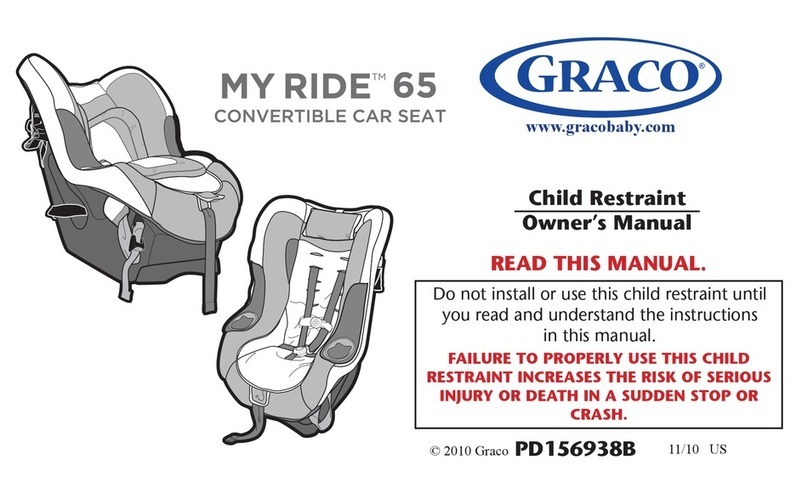GENERAL WARNINGS
To reduce the risk of SERIOUS INJURY or DEATH, read this owner’s
manual and your vehicle owner’s manual before installing and using
this car seat. By properly using this car seat and following these
instructions (and the instructions that accompany your vehicle),
you will greatly reduce the risk of serious injury or death to your
child from a collision.
• NEVER LEAVE YOUR CHILD UNATTENDED IN THE CAR SEAT
• NEVER USE THIS CAR SEAT IN A PASSENGER SEAT FITTED
WITH AIRBAGS.
• NEVER use the car seat without fastening it into your vehicle.
• NEVER alter or modify the car seat in any way as this may
aect its performance in the event of a collision.
• The harness SHOULD ALWAYS be easily accessible. It is
important that your child can be released quickly in the event of
an emergency.
• This is an ISOFIX car seat and must only be used in a vehicle
with an approved ISOFIX and tether strap system.
• ALWAYS refer to your vehicle’s handbook before using this seat
in your vehicle.
• This car seat is only suitable for children in Group I (9-18kg),
Group II (15-25kg) and Group III (22-36kg) (about 12 months to
12 years old).
• ONLY FIT this restraint in a forward-facing passenger seat.
NEVER fit into a rear-facing or side facing passenger seat.
• The safest placement for the car seat is in the rear seat and it
must only be used in a forward facing position that is fitted for
an automatic 3-point safety belt, which is approved by ECE R16
or an equivalent standard.
• When installed in Group II and III, the vehicle seat belt must be
threaded along the red belt guide on the car seat. Never try to
use belt routings other than specified.
designed in NZ 4
